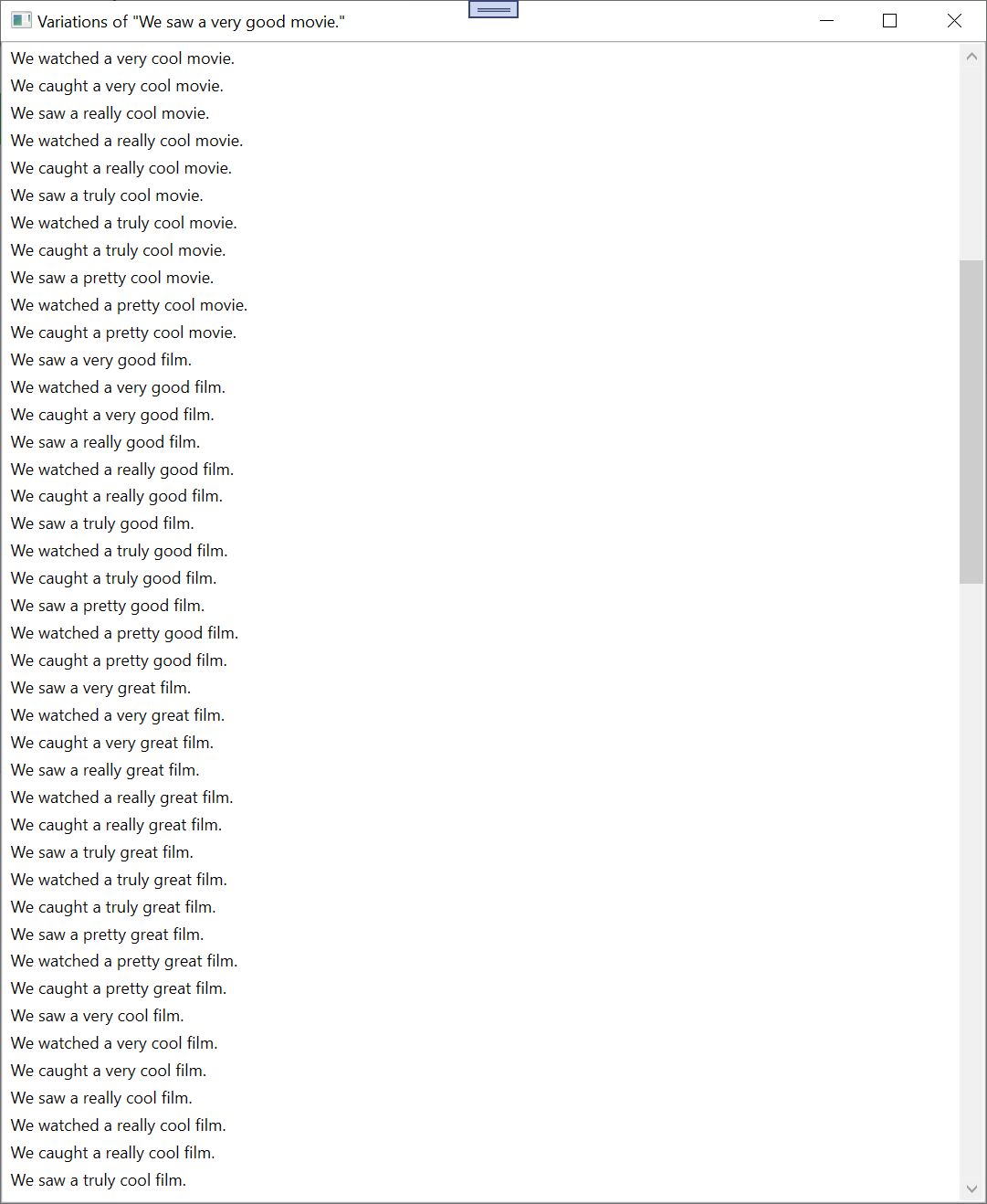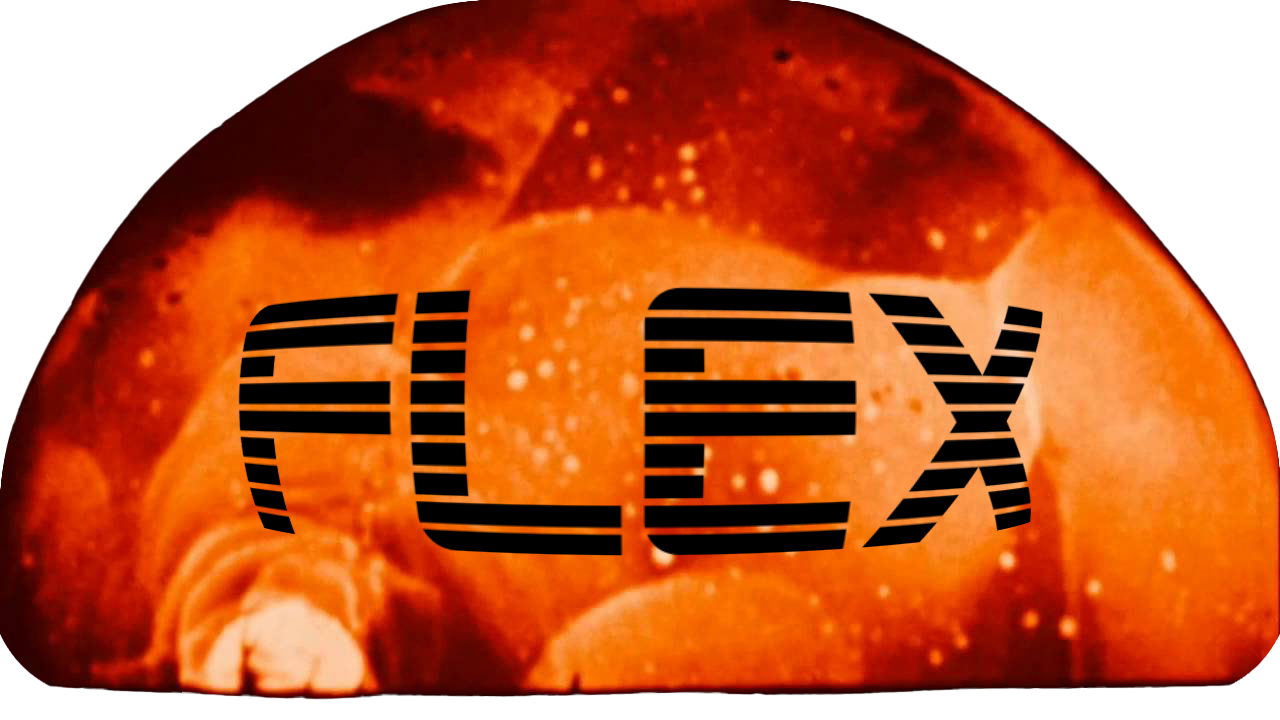
Flex creates specifications of English grammatical elements, which can be permuted to generate text expressing an idea in a variety of ways.
Flex is built on top of Echo, so you may want to review the Echo documentation before proceeding.
Here’s the Flex repository on GitHub.
Prerequisites
Like Echo, Flex uses the servers for CoreNLP and SimpleNLG. The folder called Server BAT files contains two Windows batch files that I use to start these servers. These batch files refer to specific locations in my file system, so you’ll need to modify them to reflect the actual locations where you install the distribution .jar files. The SimpleNLG server requires two .jar files that are not included in the SimpleNLG distribution – hsqldb_6148.jar and lexAccess2013dist.jar.
In addition to CoreNLP and SimpleNLG, Flex uses the Datamuse API, so you’ll need an internet connection to use it.
The User Interface
The Visual Studio startup project for the user interface is Flex_UI_WPF. Let’s start it, and parse a simple declarative clause:
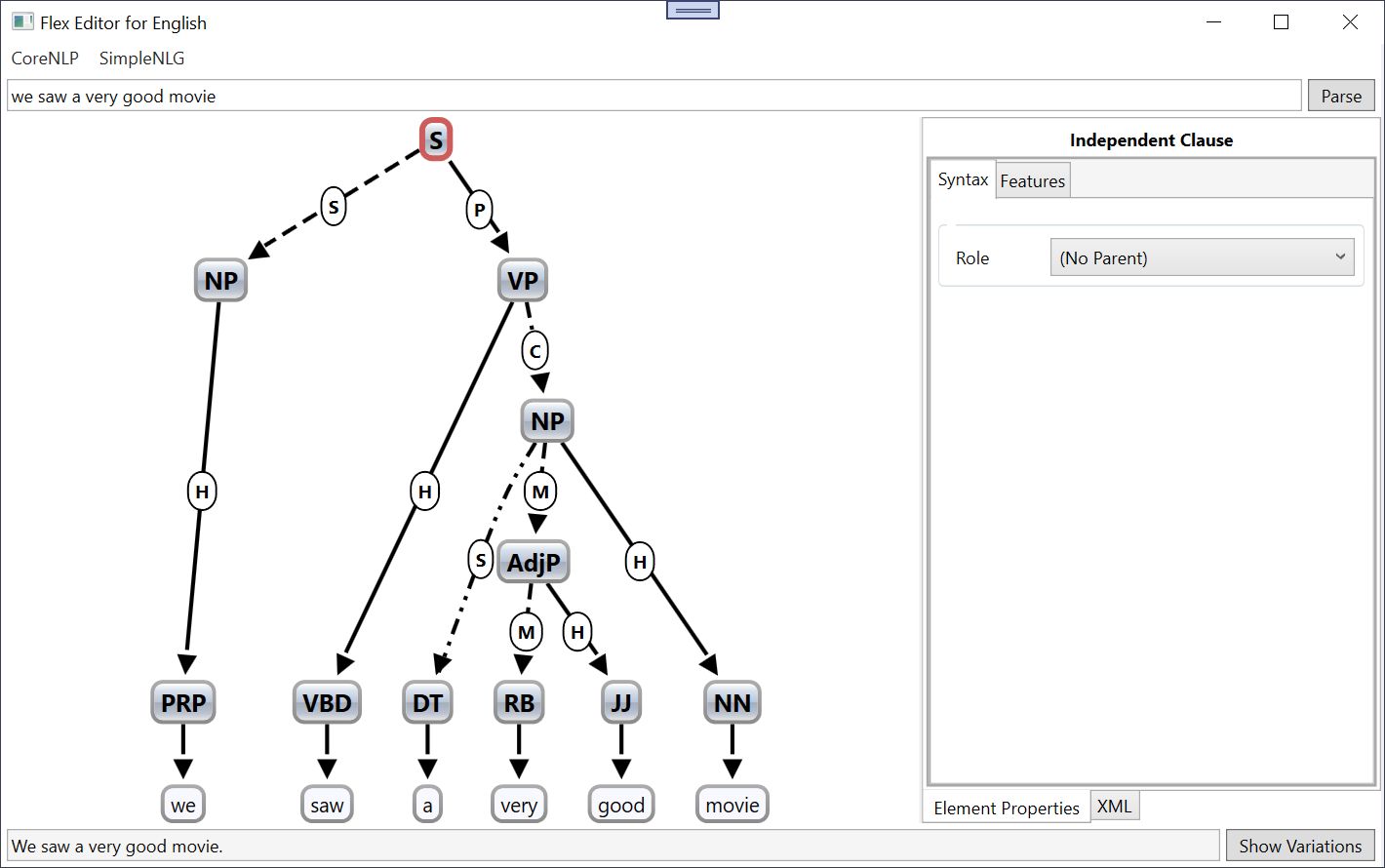
So far it looks almost identical to the Echo window, with the exception of the Show Variations button in the lower right.
Specifying Word Variations
Nouns, verbs, adjectives, and adverbs have a special property not shared by other parts of speech: They’re often surrounded in the lexicon by a rich constellation of other words that can replace them in a given syntactic structure. If the replacement word is a true synonym the swap has little – if any – effect on overall meaning. The replacement word can also be similar but not quite synonymous, adding shades to the overall meaning or changing it altogether.
Let’s look at some examples. First I’ll select the noun “movie” by clicking on it:
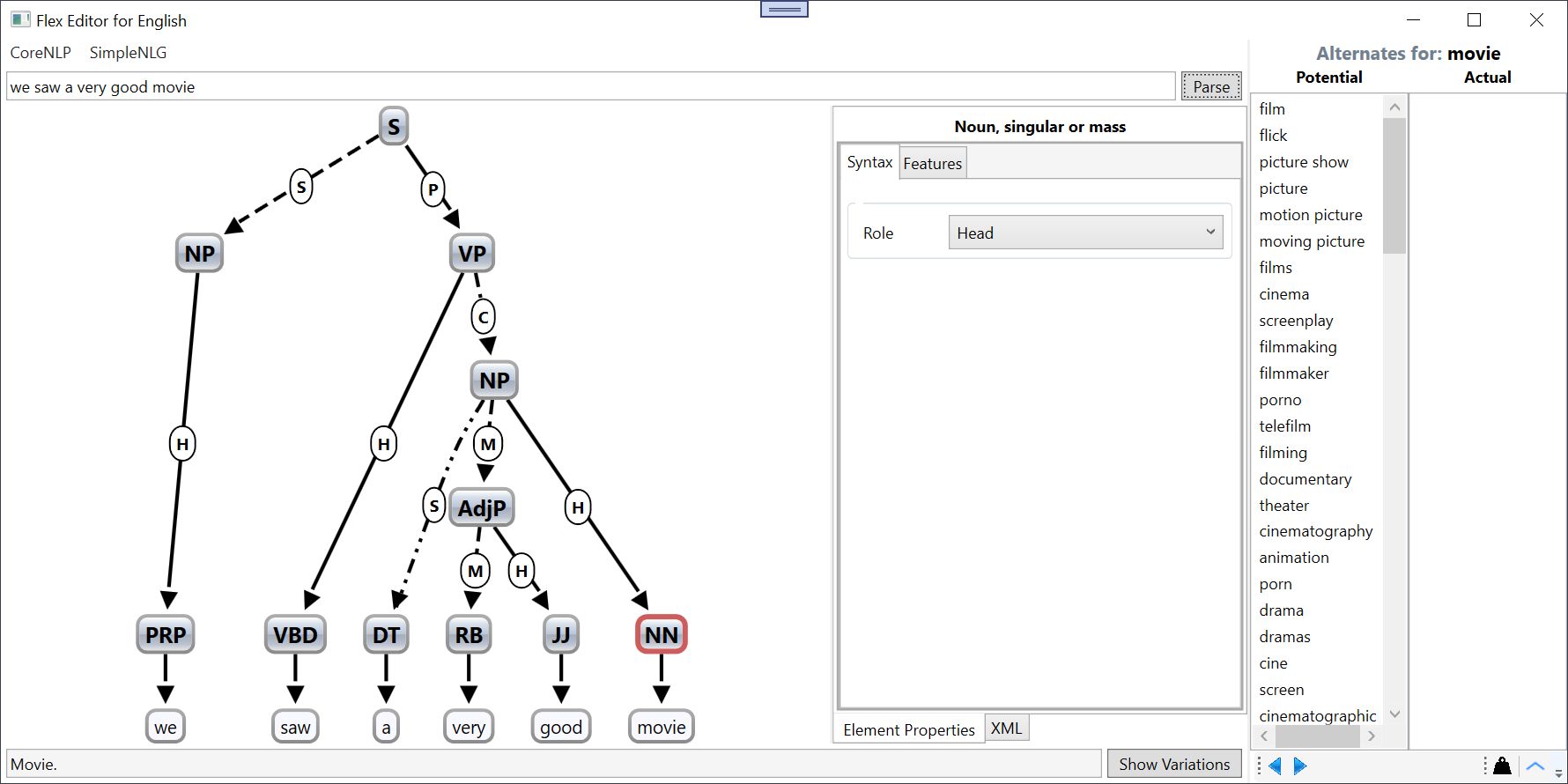
A new control has appeared on the right side of the window. This control will allow us to select alternate words that can be swapped in for “movie.”
On the far right is a list of words with the header Actual. This list is currently empty.
To the left of the Actual list is another list with the header Potential. This list contains words that are candidates for the Actual list. When a noun, verb, adjective, or adverb is selected, and the Alternate Word Selection Control opens, the Potential list is initially populated by querying the Datamuse API for words with similar meaning to the selected word. Later, we’ll see how to bring a wider variety of words into the Potential list, but for now let’s select a few words that could be directly substituted for “movie”:
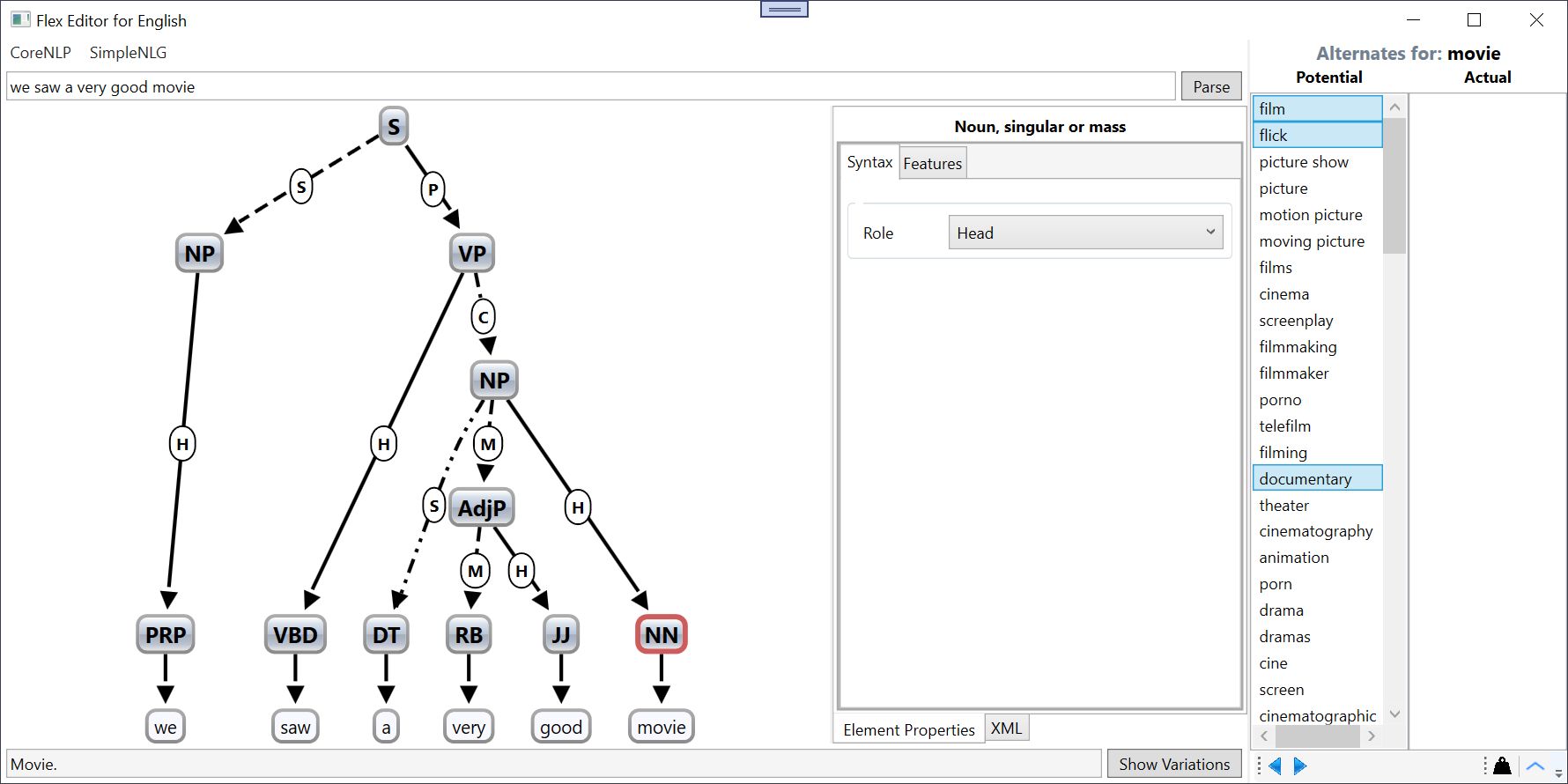
When one or more words are selected in the Potential list, pressing the Insert key moves the selected words from Potential to Actual:

Now the word “movie” has three alternate forms, in addition to its default form. With “movie” still selected in the graph, pressing the Show Variations button opens another window to display the realized forms of the selected element:

Since we’re only realizing a single word, this list of variations is not very interesting yet.
Each of the syntactic elements containing “movie” also has three alternate forms. For example, let’s select the noun phrase “a very good movie”:
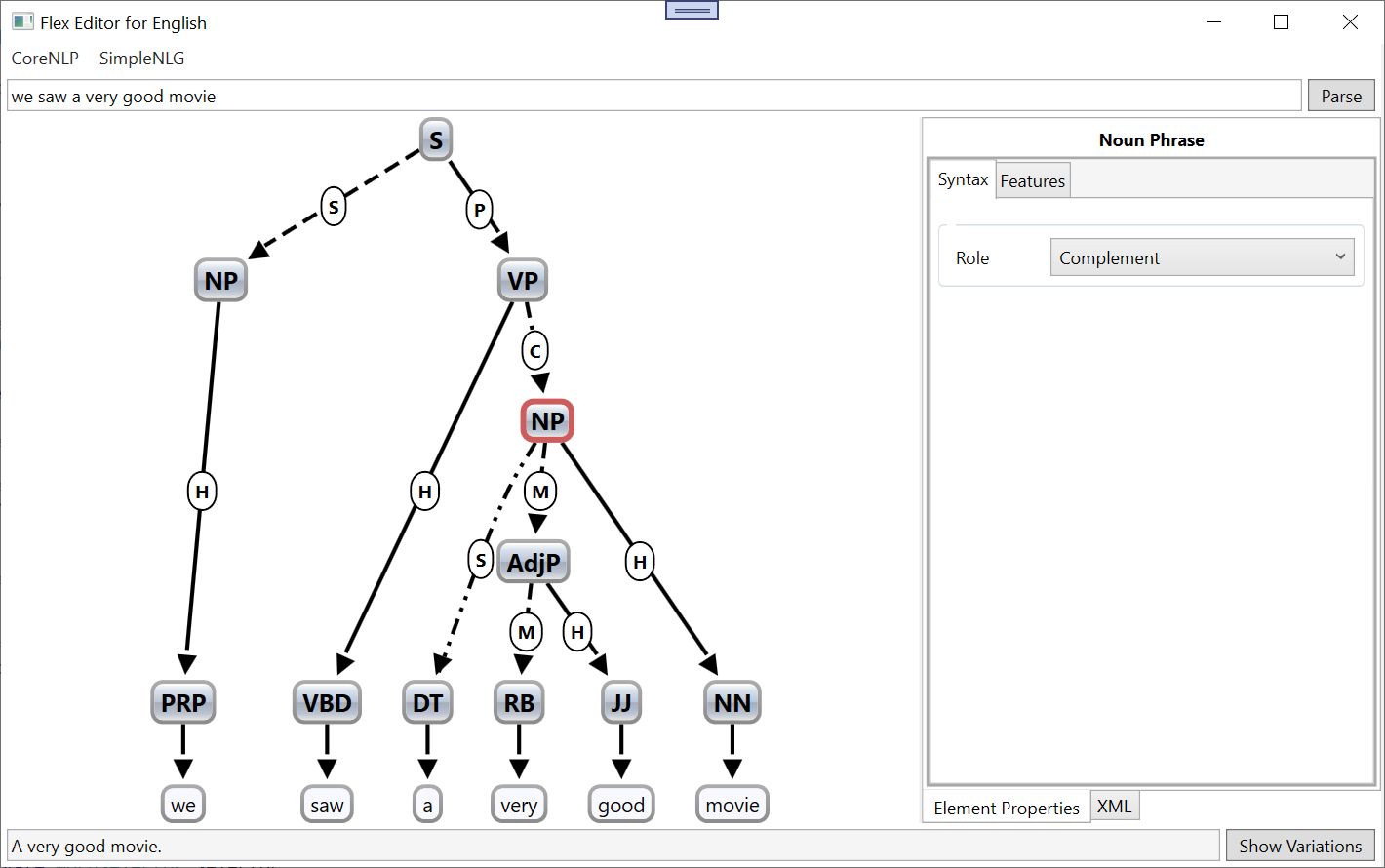
…and click on the Show Variations button to show the variations of that noun phrase:

That’s a bit more interesting; but it’s not really a Combinatorial Explosion of Language, is it?
Our sentence happens to contain a noun, a verb, an adjective, and an adverb. What if we assign some alternates to each of those words?
Instead of the verb “saw,” we could say “watched” or “caught.” Notice that we specify the lemma form of verbs, and SimpleNLG will inflect the verbs to past tense when it does the realization:
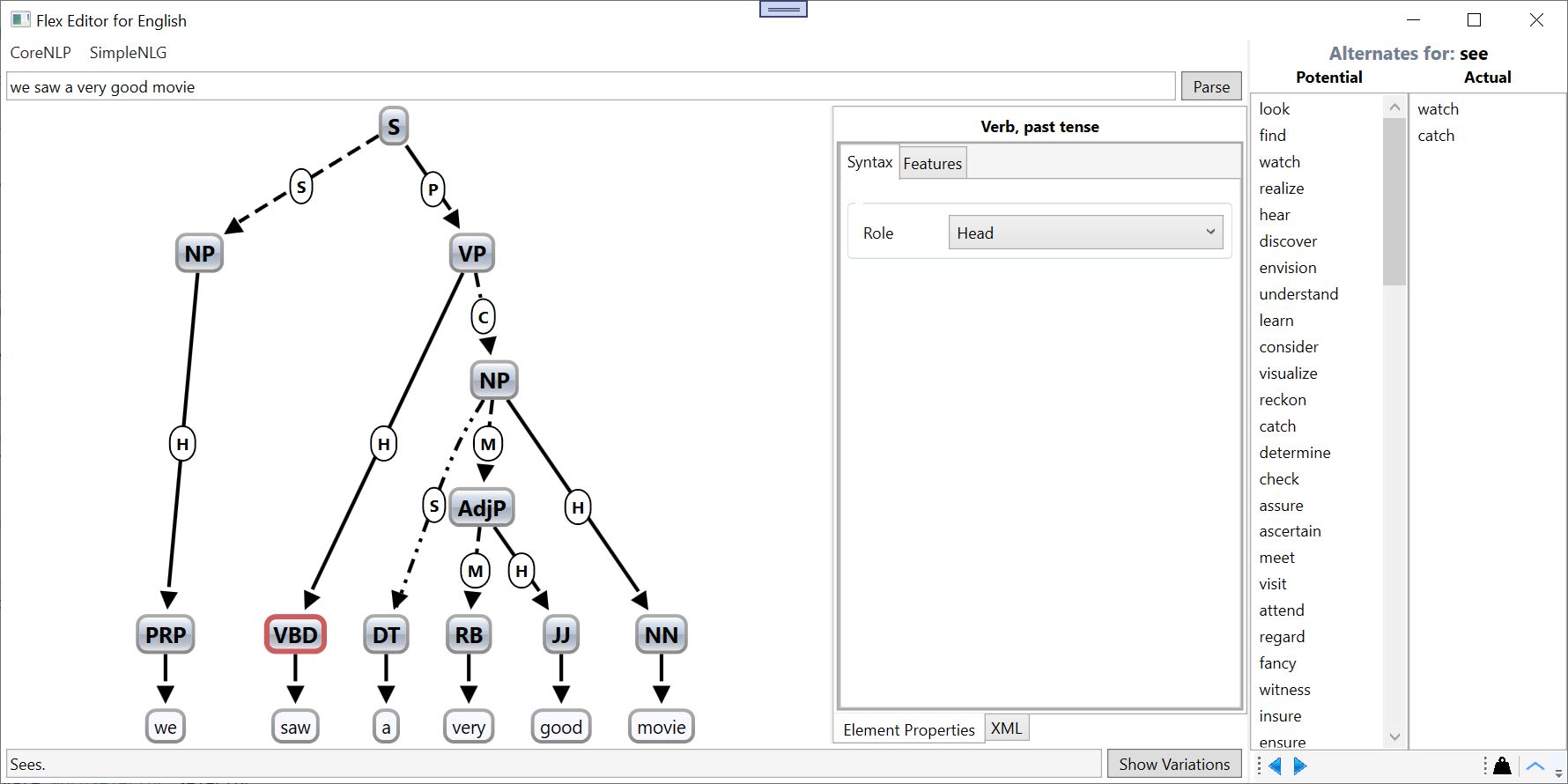
Instead of the adverb “very,” we could say “really,” “truly,” or “pretty”:
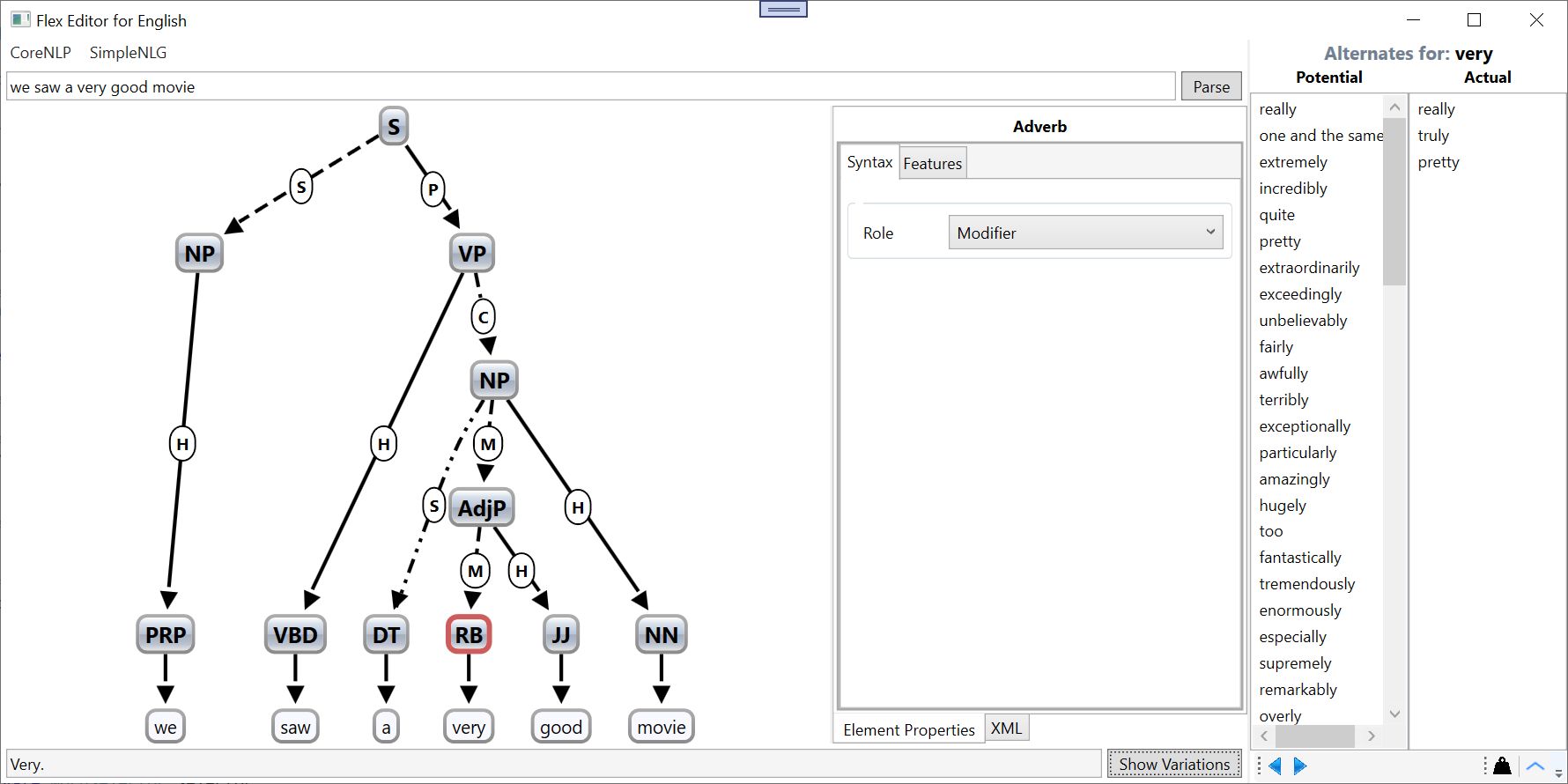
Instead of the adjective “good,” we could say “great” or “cool”:
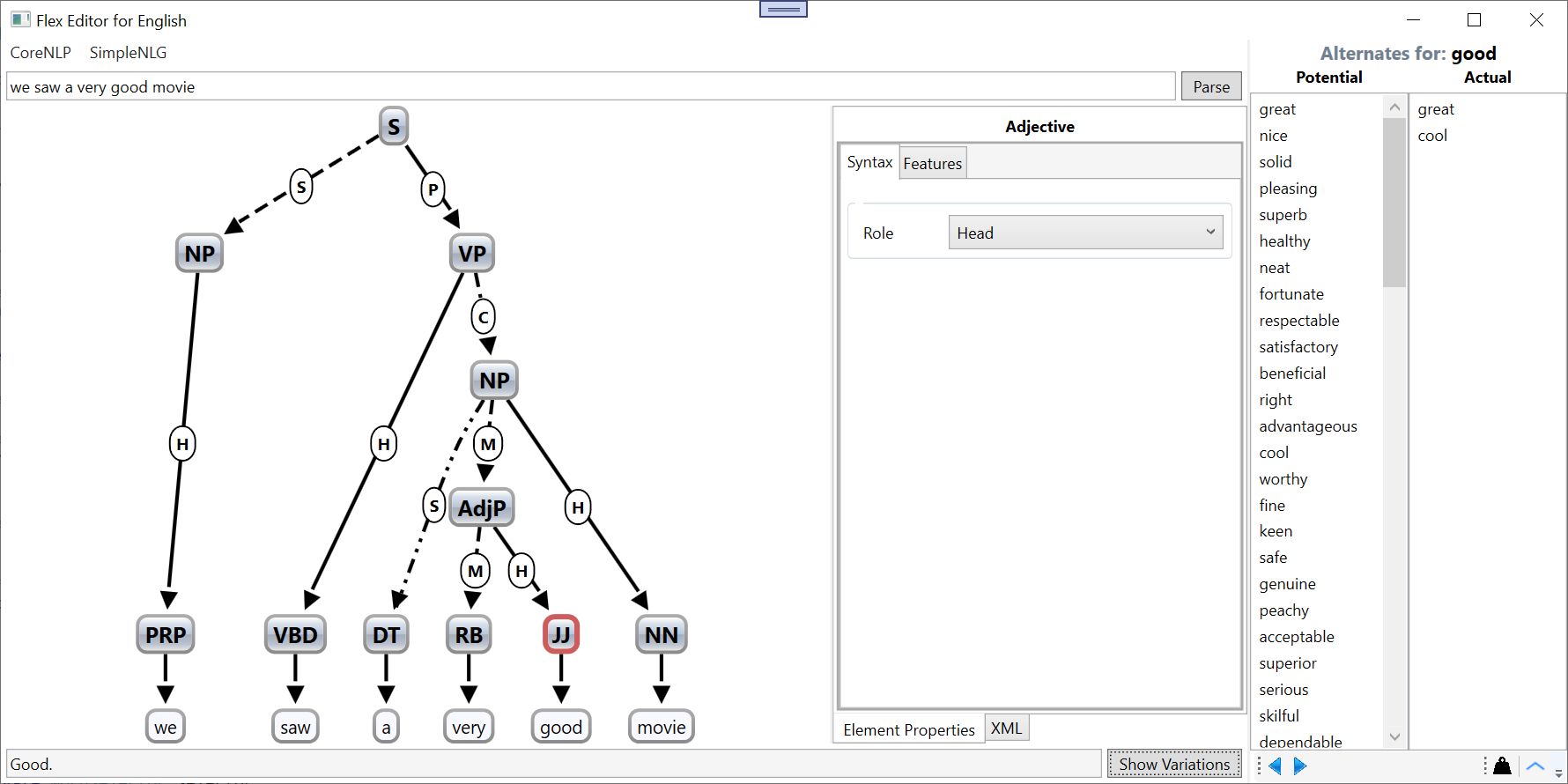
Now we have:
- 3 variations of “saw”
- 4 variations of “very”
- 3 variations of “good”
- 4 variations of “movie”
The n-fold Cartesian product of these four sets has 3 * 4 * 3 * 4 = 144 elements, or 144 variations of the sentence “We saw a very good movie.”:
